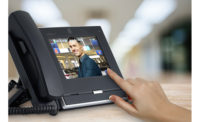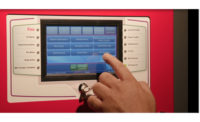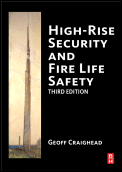The fire alarm business has always been driven largely by code requirements — and for years that meant every fire installation had two phone lines to help ensure that alarm signals would be received by the central station.
But today other options for communicating with the central station are arising, driven by sweeping changes in telecommunications technology. With the use of voice-over-Internet protocol (VoIP) and cellular on the rise, and with broadband Internet and data networks now widely available in homes and businesses of all kinds, equipment makers have been rethinking their fire panel designs — and standards bodies increasingly are recognizing new options for fire alarm communications.
Central Station Communication Advances
Although individual states and municipalities determine fire system requirements for their areas, those requirements often are based on the National Fire Protection Association 72 code, which is updated every three years. One fire protection expert who is very familiar with those requirements is Shane Clary, vice president of codes and standards compliance for Pacheco, Calif.-based Bay Alarm Company. Clary is the chairman of one of the technical committees that helps determine NFPA 72 code requirements.
As Clary explains, the NFPA is moving away from specifying communications technologies dealers can use for fire alarm communications, focusing instead on the characteristics that any communications link used for fire alarms must meet. Ultimately NFPA requirements drive the specifications that fire alarm manufacturers must meet in order to obtain appropriate UL listings for specific products.
Several manufacturers — including Bosch, Digital Monitoring Products (DMP) and others — now have obtained UL approval for fire panels that use a single landline broadband connection, also known as a network connection, or a GSM cellular connection for communication with the central station. The GSM cellular communication uses wireless data rather than voice service. Typically fire panels designed for use with GSM or a landline broadband network communicate using the Internet protocol (IP).
In order for a sole path GSM or landline broadband connection to obtain a UL fire listing, a critical requirement is for the link to check in with the central station every five minutes. When a landline broadband connection shared with the customer’s computer network is used for this purpose, the cost of communication is virtually free. When GSM is used, air time charges in the range of $30 a month are entailed, explains Andy Johannsen, director of sales for King of Prussia, Pa.-based manufacturer VES Fire Detection Systems. But that’s considerably less than the cost of two phone lines.
“The network is the most reliable, least expensive option,” comments Tom Mechler, product marketing manager for Fairport, N.Y.-based manufacturer Bosch Security Systems. “If a customer has a network connection in place, that’s the way to go.”
Some customers may prefer to continue to use two phone lines for fire panel connectivity to the central station, but increasingly businesses are converting their phone systems to VoIP. At least one manufacturer — Bosch — offers a central station receiver that the company says is optimized for use with VoIP systems, helping to ensure that fire alarm signals can get through to the central station.
Network Connectivity Gains
In addition to central station connectivity, IP communications also has unleashed a range of other capabilities in today’s fire panels.
Bosch, for example, relies on a customer’s data communications network not only for connectivity to the central station but also as a means of enabling fire panels located in different areas of the customer premises to communicate with one another and to be managed and monitored as a single seamless system. Each panel can support more than 500 detection points and the entire system can support more than 4,000 points, Mechler describes.
This approach distributes risk as well as intelligence, Mechler notes. If several thousand points were connected to a single panel and something were to happen to the panel, all of those points could be lost. But with Bosch’s approach, Mechler says, “If something terrible were to happen to the panel on one side of a building, the other side of the building would still be intact.”
Networking several panels together also helps minimize the wiring needed, helping to minimize system costs, Mechler offers.
Several manufacturers offer Ethernet ports on their fire panels into which dealers can plug a laptop to program the panel. At least one manufacturer — Northford, Conn.-based Silent Knight, a unit of Honeywell — is developing a smartphone application for programming, which could eliminate the need for a technician to carry a laptop.
“A new generation of installers is asking ‘Why can’t I do this through my cellphone?’” comments Jim Spooner, product manager for Silent Knight. “We’re looking for ways to do that using an application downloaded onto a smartphone.”
Some manufacturers use the Ethernet ports on their panels for service purposes, as well. For example, Spooner notes that Silent Knight has a panel that can advise technicians in response to an IP query which of numerous system sensors need to be cleaned.
Some fire panels also support two-way remote communications via e-mail to and from the security dealer or authorized end users. St. Louis-based manufacturer Potter Electric Signal offers a fire panel that supports that capability, and as Craig Summers, national sales manager for the company explains, “Every day we’re coming up with new uses for the TCP/IP port.” For example, the system can help generate revenues for dealers by e-mailing a reminder to business owners that it’s time for an inspection.
At least one fire equipment manufacturer — VES — also offers dealers a way to store historical information gathered from customer fire panels. The company operates server infrastructure to which fire panels are programmed to send a range of data. “We offer remote event management and remote programming capability and diagnostics,” Johannsen describes. “If there are new fire alarm events, the panel would communicate to the monitoring station first, but we also give it the option to log remotely onto our servers.”
Using this capability, dealers can go onto their computer to view a dashboard of all fire alarm sites and schedule service calls or inspections accordingly instead of trying to pull information from various sources, Johannsen explains. Today, he says, dealers rely largely on inspection software that is not tied in to their fire panels for this purpose. By using the VES offering, he says dealers can eliminate “a lot of data entry and duplicate work.”
New Display & Power Options
Communications may be the hottest fire panel development area, but it’s by no means the only one. Advances also are being made in panel displays and in power supplies. Advances on these fronts should help make fire systems easier to install and use.
When it comes to displays, “the fire industry has been in the 1970s or 1980s for quite some time now,” comments Johannsen. As a result, he says it isn’t as easy as it could be for technicians and end users to interact with the systems.
VES hopes to bring the fire industry up-to-date with a new interface already available in the European market and expected to be available in the United States in several months. Using it, Johannsen says, “people can easily recognize what they need to do and how to do it.”
The new VES panel also will be built in a more modular manner, Johannsen notes. The modular approach should enable technicians to replace parts with little disruption to the customer. “Today if a panel goes bad, technicians are ripping the whole thing off the wall,” Johannsen says, adding that with the new design, technicians can simply pull out the old part and put in the new one.
Meanwhile, two of the latest fire panel models from Bradenton, Fla.-based Edwards, a UTC Fire & Security Company, have a patented Voltage Boost™ technology built into every system power supply.
Normally when power to a panel is interrupted and the panel draws from its backup power supply, the voltage eventually begins to drop as capacity is depleted. But as Mike Ventola, product marketing manager for Edwards explains, when that situation begins to occur on Edwards’ new panels, the company’s Voltage Boost technology will “switch in a specially designed voltage boost circuit that will actually amplify the systems’ voltage and deliver a consistent 22.5VDC, never letting it drop below this level even during full alarm conditions.” The product supports this capability for the specified standby time — typically 24 or 48 hours, Ventola says.
Edwards’ Voltage Boost technology also overcomes potential issues with voltage loss that can occur over long wire runs, Ventola explains. This enables security dealers to use lighter gauge wire for equivalent distances or the same gauge cable for longer wire runs — saving time and equipment costs, he says.
Labor costs also should be reduced, Ventola says, because most system applications will require less hardware. By using Edwards’ Voltage Boost technology, he says, installations will require fewer AC circuit breakers at the distribution panels, fewer sets of backup batteries and less wall space in an electrical room for hardware mounting.
New Signaling Requirements Could Impact Fire Panel Design
Fire protection requirements are always changing, and several sources that SDM interviewed for this article offered a hint of things to come.
Moving forward, Jim Spooner, product manager for Silent Knight, expects to see signaling requirements merging with fire alarm requirements. Notifications will be based on risk assessment, and will vary from one type of customer to another, Spooner explains.
At a chemical plant, for example, notification of an attack might take precedence over fire alarm notification. But at other types of facilities, fire alarms might have top priority.
“It has been suggested that the fire alarm panel be the interface for a lot of these things,” Spooner says.
Panels that will support the new notification requirements will need to support the ability to customize messages and have inputs for a range of event types, he says, adding that Silent Knight expects to have a fire panel on the market to meet these requirements early next year.
Standardization Still Needed in Fire Panel Communications
Cellular and network connectivity increasingly are being used for communicating fire alarms to the central station. But some say further development is needed in that area.
Central station receivers traditionally weren’t set up to communicate using Internet protocol (IP). Some manufacturers have addressed this by acting as a middleman — or establishing relationships with middlemen — to operate data centers that receive fire alarm signals in IP format, convert them to a traditional receiver format and forward them to a central station. But dealers and ultimately their customers pay a recurring monthly charge when that approach is used.
Alternatively, some manufacturers have released central station receivers that are designed to receive IP communications from their own panels. But if a dealer uses fire panels from multiple manufacturers, it needs different receiver software for each manufacturer.
To address this situation the Security Industry Association is hoping to agree on a standard method of IP communications between the fire panel and the central station, notes Andy Johannsen, director of sales for VES Fire Detection Systems. When that standard becomes available, it should help further the use of cellular or network connectivity for fire alarm communications.












